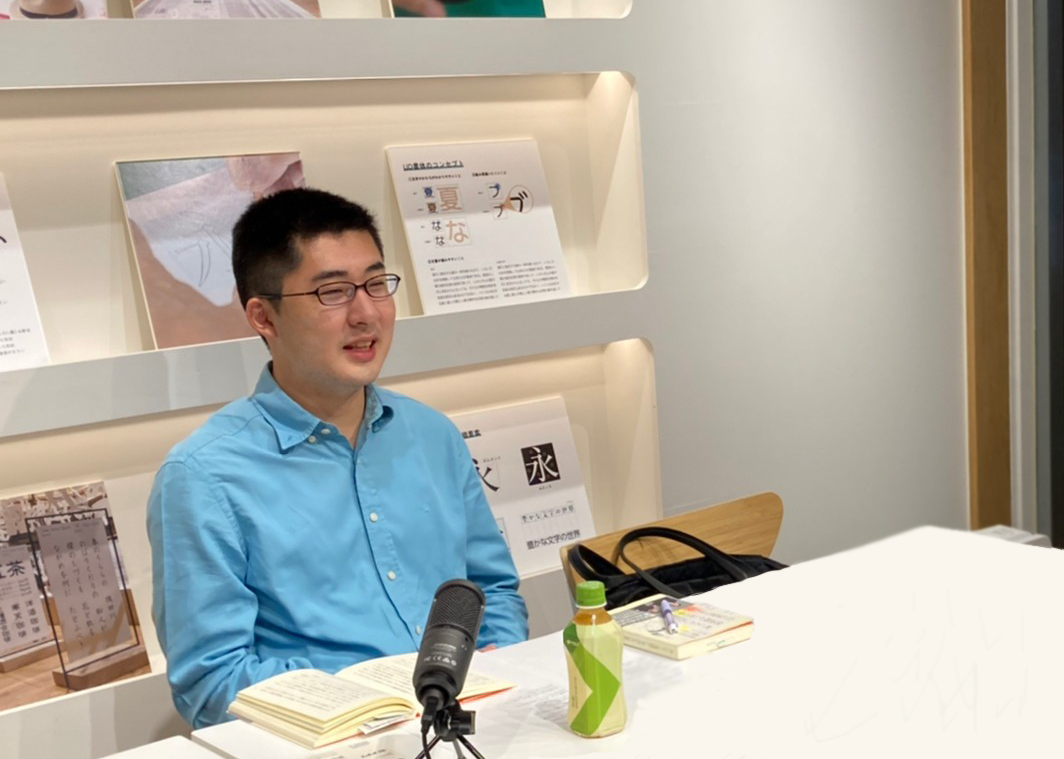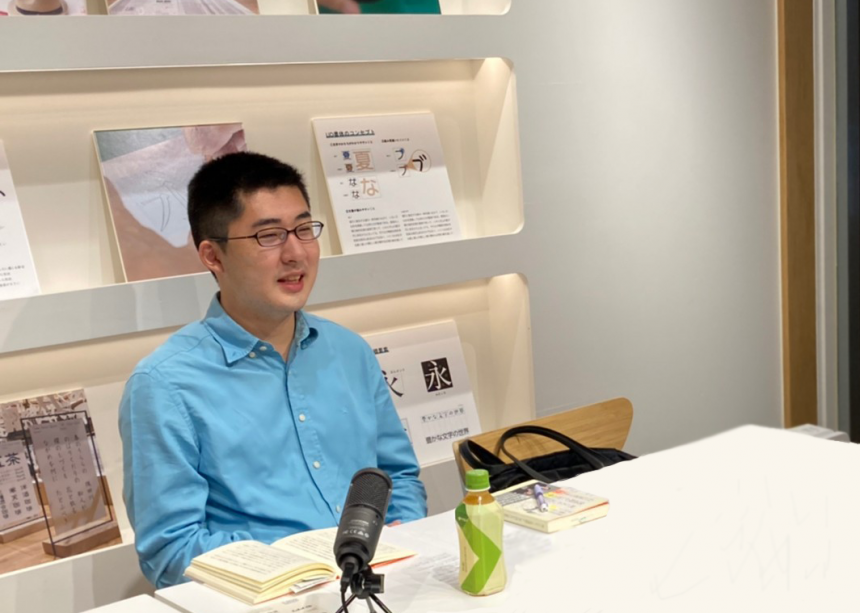
February 2022 “How I, a child with developmental disabilities who wanted to die, was able to change myselfNishikawa Mikinosuke is the author of "Developmental Disorders: A Guide to Developing a Disability," a book written by a current university student and not a celebrity. Despite being a book written by a non-celebrity, it has been well-received for its insight into the feelings of people with developmental disabilities, and has already gone into its fourth printing. Nishikawa, who is a person with a developmental disability, aims to write a book from the perspective of those with disabilities, and has used the UD Digital Textbook Font for the main text. Given his own experiences of struggling with reading and writing, why did he choose the UD Digital Textbook Font? We also heard about an episode with former Kojimachi Junior High School teacher Kudo.
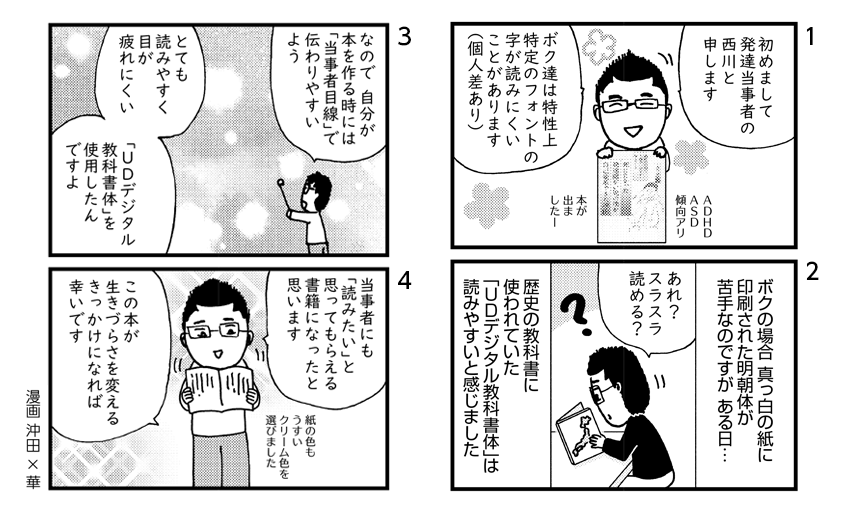
My encounter with UD Digital Textbook Font
What kind of font is UD Digital Textbook Font to you, Mr. Nishikawa?
Nishikawa: I first encountered UD Digital Textbook Font in my junior high school textbooks. For me, fonts have a big impact on how easy they are to see and read, but I find that UD Digital Textbook Font is very easy to read and doesn't strain my eyes.
Furthermore, previously my handwritten characters were unbalanced and I sometimes couldn't read them myself, but after I discovered UD Digital Textbook Font, the characters are now all the same size.
Children with special needs do not aim for beautiful handwriting like that of their teachers at school, but for handwriting that will not be marked as "X" when they handwrite their assignments and that they will not have any problems with. I feel that the UD Digital Textbook Font has taught them that this kind of handwriting is the model.
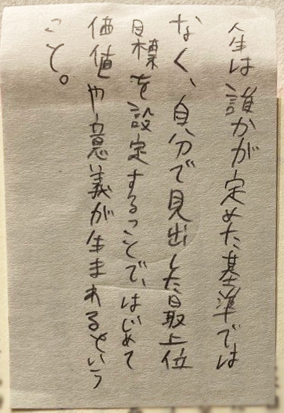
Why did you choose UD Digital Textbook Font for the book text?
Nishikawa: When I thought about writing a book, I had the idea of writing a book that would be considerate of people in need and convey the contents to them. The content is important, but before that,I want to write a book that is relatable to readers and is written from the perspective of the person involved.I thought so.
There are many books out there aimed at people with developmental disabilities, but few of them even take into consideration the font and paper color, which left me wondering, "Who is this book intended to be read by? Isn't it disregarding the sense of responsibility of those involved?"
No matter how good the content of a book is, if it is difficult to see or read, the content will not sink in. For the book I wrote this time, from the perspective of someone who understands the situation, I used the UD Digital Textbook font throughout, and the paper color was a subdued color rather than pure white.
Not only people with special needs, but even my grandmother said it was easy to read, and it was also praised in book reviews as being easy to read.Books that make readers want to read themI think we were able to do this.
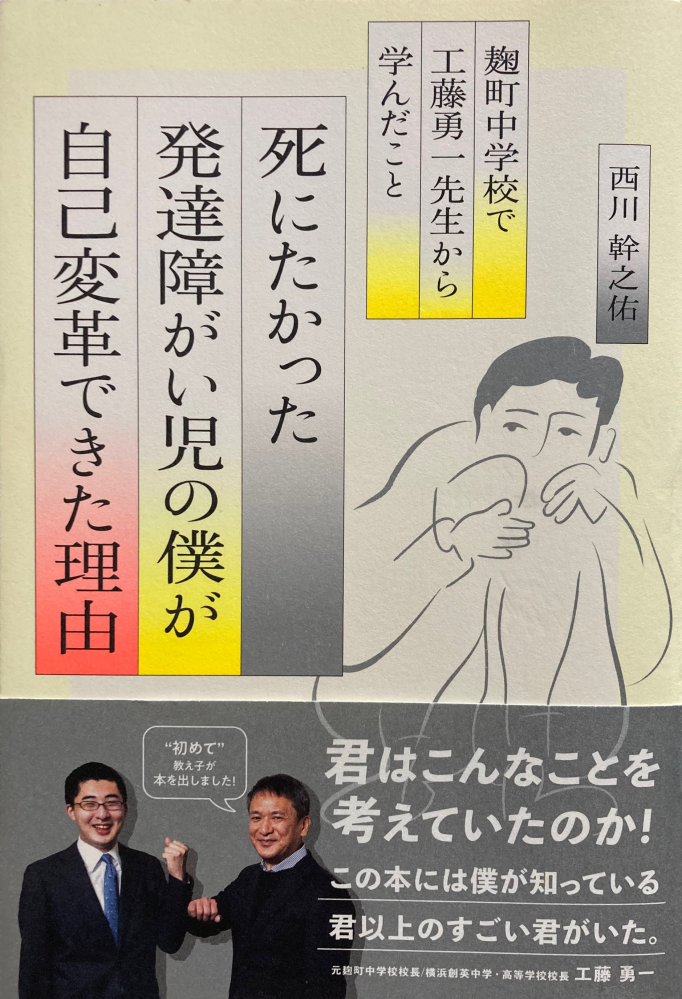
A chance seized from the teachings of former Kojimachi Junior High School principal, Mr. Yuichi Kudo
In the book, there is an episode about Mr. Yuichi Kudo, a former teacher at Kojimachi Junior High School.
What teachings from Professor Kudo have had a particular impact on you?
Nishikawa: One is the story of the God of Opportunity. Opportunities are fleeting, and in order to seize them, you need to be constantly prepared and build up your skills so that you can grab that sudden opportunity that comes your way. I heard the same story from my grandfather, and when I was writing this book, I realized that the God of Opportunity really does exist.
Another thing is that you should not confuse the purpose with the means. To achieve a purpose, several means are necessary, but as you take action, the means can sometimes become the purpose without you even realizing it. In such cases, it is important to clarify the ultimate goal, the "highest level goal." Professor Kudo's teaching of clarifying the "purpose" and then thinking about the "means" to achieve it is one of the ways of thinking that I would like to continue to cherish.
Based on these teachings from Mr. Kudo, when I was struggling with the Eiken test, I was able to clarify the "ultimate goal" that I should aim for most, and I realized that passing the Eiken test was not actually my ultimate goal, which helped me overcome the challenges. In fact, the ultimate goal I discovered at that time is what led to the writing of this book.
Please tell us how you came to write this piece.
Nishikawa: It all started with me wanting to create an English study book that was easy for people with special needs to learn. When I was studying for the Eiken exam, I looked for an easy-to-read book, but all I found were books with thin print, white paper, and other difficult-to-read features.
Of course, there are drill books published for people with special needs, but those books end up on the special needs education shelves, and I felt lonely and sad that we were in a different category.
For various reasons, it did not end up being published as an Eiken book, but the book I wrote this time is the result of changing my approach to make the most of the opportunity that came my way, without changing the overarching goal I learned from Professor Kudo: "I want to be of help to people with special characteristics."
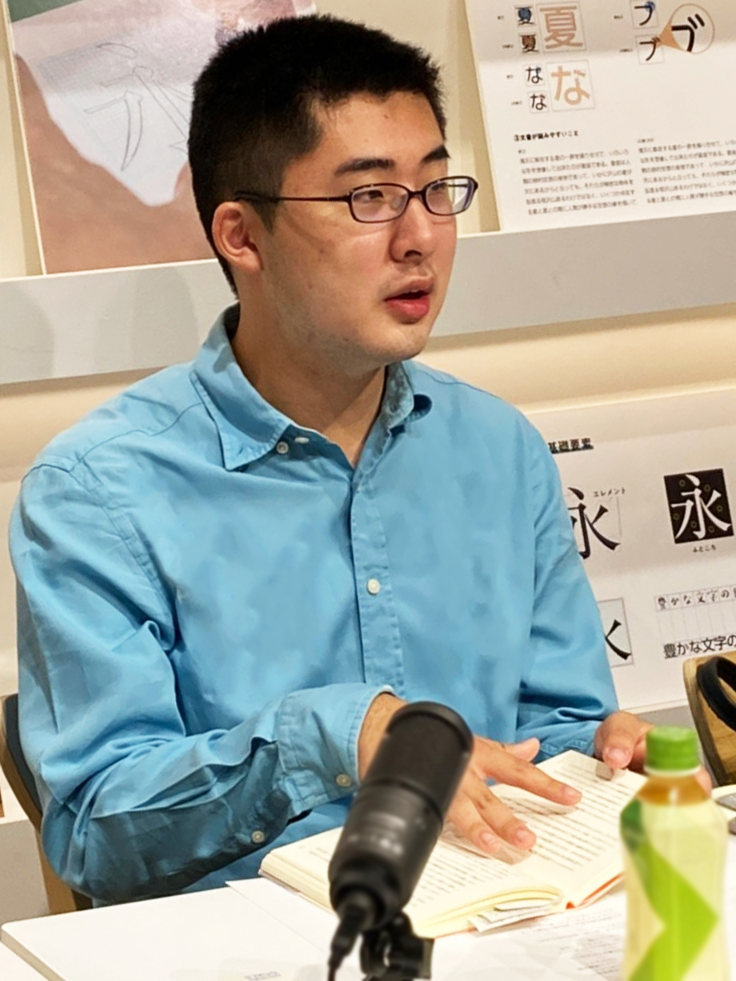
Even now, one of my top goals is to have all study books and textbooks use UD fonts.It may be difficult to make something that is good for everyone, but nine out of ten people can read it! Easy to read!I want to create something that people will say, "That's great!"
When you first started studying English vocabulary, you also had difficulty learning the characters. Did you do anything to help?
Nishikawa: I've always found English fonts difficult to read, and I've had a lot of trouble with them, such as miswriting the number "2" and the letter "Z," or reversing the lowercase letters "b" and "d."
Nowadays, even in elementary schools, one device is distributed to each student under the GIGA School Initiative, but at the time, support using iPads and other devices was not widespread in the educational field, and handwriting was still the norm in society. Handwriting will never disappear from the educational field or from everyday life. That's why I never gave up on writing by hand, and I brainstormed with my mother to come up with ideas.
One of these is the creation of handwritten fonts. By keeping in mind the differences between each character, and consciously writing the differences that I can see, I have become able to distinguish between them.
I think learning about letters by creating fonts is a very unique way to do it.
Finally, please say a few words to everyone reading this interview.
Nishikawa: "Seeing" is a very important element in our daily lives. Just changing one font can make a big difference to the content and have a big impact on the reader."It's just a font, but it's still a font"is.
I would be happy if those who read this interview would pay more attention to fonts in the future.
Every year, April 2nd is World Autism Awareness Day, as designated by the United Nations. We are currently planning various projects for World Autism Awareness Day, one of which is a plan to use UD digital textbook fonts for handouts used in schools during the period. We would like to use the font as an opportunity to think about universal design with people affected by autism.
Book giveaway event!
Nishikawa published "How I, a child with developmental disabilities who wanted to die, was able to change myself"of,10 lucky winners will receive a gift!
To those who apply using the form below,A book signed by Mr. NishikawaWe hope you will enjoy not only the content of the book, but also the ingenuity that Nishikawa put into making the reader want to read it.
Application period: Until December 31, 2022
※ WinnerspersonWe will notify you of your winnings via the email address you entered.

Notes:
Regarding the protection policy of personal information entrusted to us when you apply,Privacy PolicyPlease read the above before applying. The information provided will be used for the purposes of notifying winners and sending prizes, providing it to third parties (Mr. Nishikawa, Jiji Press), providing and proposing information about Morisawa's products and services, contacting you, conducting marketing activities, and providing information and contacting you by email, telephone, mail, fax, visits, etc.
*1 Applications are limited to one per person during the period.
*We may contact you regarding the two-bottle giveaway and shipping.
*3 Prizes are scheduled to be shipped between mid-January and February 2023, but may be delayed due to unforeseen circumstances. In addition, prizes can only be shipped to addresses within Japan.
*4 Please note that if you do not provide the necessary information, such as your correct shipping address, within three days of being notified of your winning, your winning will be invalidated.
*5 The date and time of prize delivery cannot be specified.
*Please note that Morisawa Inc. will not be held responsible for any troubles or damages that may arise from the 6-bottle giveaway.
*7 We cannot accept returns or exchanges unless the prize is defective. If the prize is defective, please contact us within 7 days of receiving it.

Mikinosuke Nishikawa(Miki Nishikawa)
Born in Sanjo, Niigata Prefecture in 2002, and raised in Tokyo. Dropped out of kindergarten. Graduated from Chiyoda Ward Kojimachi Junior High School and Teikyo London Academy in the UK. Currently a first-year student in the Department of Political Science, Faculty of Law, Teikyo University. His great-great-grandfather was Nishikawa Suezo, a professor at the Imperial University and founder of Sokkisha, and his great-great-grandmother was Kamikawa Matsuko, a renowned translator of Russian literature and social activist. Born into a family of four generations who have graduated from the University of Tokyo, starting with his great-great-grandfather, he was expected by those around him to attend, but due to his ADHD, ASD tendencies, and learning disabilities, he was enrolled in special needs classes until the second grade of elementary school.
Although he was later transferred to a regular class, he hit academic and social obstacles, lost sight of the meaning of life, and began to think about suicide in the third grade of elementary school. After graduating from elementary school, he met Kudo Yuichi, who was then the principal of Kojimachi Junior High School, and learned the concept of "autonomy," which completely changed his life. While he was a student, he passed the Eiken Grade Pre-2 and the News Examination Grade 2. As he thought about his future during the COVID-19 pandemic, he thought he could help children with developmental disabilities who were suffering like himself, and he decided to write the book "Why I, a Child with Developmental Disabilities Who Wanted to Die, Was Able to Transform Myself."
The MORISAWA BIZ+ plan allows you to use 55 UD fonts, including the "UD Digital Textbook Font" used in Nishikawa's books.Here
If your organization is considering using UD fonts, please feel free to ask us any questions below.
Want to know the benefits of introducing an organization?Here

